Army boost. Part of 2
9. Adjutant General Artillery General N. I. Ivanov. History Great war. T. 2. From the author's library
A.E. Evert September 26 set for his troops the task of keeping as large a foothold as possible ahead of Ivangorod - to ensure the upcoming deployment. The transition of the army to the left bank was scheduled for the morning of September 27.
Simultaneously with the connections of the 4 Army, the crossing of the 2 and 23 buildings was planned - to the area of Garwolin and Gora Kalwaria. The commander ordered the 75 and 81 infantry divisions of the 26 of September to change the parts of the 3 of the Caucasian corps defending the Vistula. The latter was instructed to concentrate on Ivangorod - in readiness for the attack on the morning of 27. The September Grenadier Corps 26 was supposed to push a regiment with a battery and a cavalry to the left bank, 16 Corps - to transfer a regiment with a battery (on the ferry) to the left bank from Kazimierz and push it to Barychka (to ensure the pontoon ferry), and the Ural Cossack Division - to move in the direction of Polichna, Zvolen (intelligence news between the Kozienice-Radom and Zvolen-Novo-Alexandria highways).
The vanguards and cavalry were to provide a springboard for deploying the army on the left bank and conduct reconnaissance of the enemy’s forces and positions.
10. Russian transport, crossing the Vistula. The great war in the images and paintings. Issue 5. From the author's library
The 4 Army helped the neighboring 5 by sending the 3 Pontoon Battalion to it.
At about 18 hours of September 26, the enemy began to fire at the leading positions and the line of Ivangorod forts with artillery fire.
A.E. Evert ordered: 1) The Grenadiers, having crossed the left bank of Novo-Alexandria, take a position on the Sarnov Lagushkov front and promote the advancement of the 3 Caucasian Corps; 2) The 16 Corps, having crossed the left bank of Kazimierz, is to advance to the position of Mshadla, Borovets; 3) Caucasians - to transfer the brigade of the 52 division to Kozienice, leaving the 84 th infantry Shirvan regiment of the 21 division to Kozienice; a brigade to advance on the front of Krasna Dombrova, Gorbatka, and the main forces of the corps, having crossed at Ivangorod, to launch an offensive on the front of Gorbatka, Sarnov; 4) Cossacks should advance to Kozienitsa and ensure the right flank of the army from Radom and Bialobržegi. The corps was asked to start the crossing at night - the commander planned to move from the crossings by about 15 km.
On the night of September 27, the troops of the 3 of the Caucasian Corps concentrated povrigadno, and on the 8 watch an order was given about the offensive.
The bridge was not ready. The voyage of each ship lasted more than 2 hours. Total 6 steamers worked.
The 1 Brigade of the 52 Infantry Division stood at Pavlovice in reserve, awaiting the readiness of the bridge. Ivangorod crossed the river 1-I brigade of the 21-th infantry division, and behind it 2-I brigade of the 52-th infantry division.
At 14 hours, German artillery opened fire. The German infantry, which occupied Kozienice, launched an offensive on the Cornwall.
September 27 All Day 21-I Infantry Division fought with increasing enemy forces. Unable to master Kozienice, the 84 and 83 regiments stubbornly did not give up their left bank positions.
The commander of the 3 Caucasian Corps told the commander that he was leaving two regiments to protect the bridge at Pavlovice. The other two regiments of the 21 division must be located in the fortress - in readiness to deliver a flank attack to the enemy if he tries to throw defenders of the bridge platform into the river.
The competent decision of V.A. Irmanov was of great importance for the outcome of the operation. Not limited to the allocation of a brigade to protect the bridgehead, the commander gradually transferred two more regiments to the left bank - to support the division of S. B. Mehmandarova.
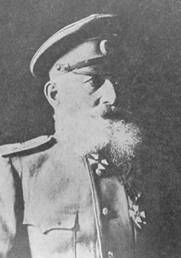
11. The commander of the 21 Infantry Division, Lieutenant General S. B. S. B. B. Mehmandarov.
On the morning of September 27, the Ivangorod serf artillery, supporting the grenadier offensive, opened fire on the Sotshehovsky and Gnevashovsky forests. The next day, the commandant of Ivangorod proposed organizing a sally - to support the grenadiers (and after their departure, the efforts of the fortress were aimed at retaining and expanding the Kozenitsky bridgehead). And the 5 serf battalions launched an offensive along the railroad.
1 schema. 4-27 September 28 Army Offensive. Korolkov G. K. The Warsaw-Ivangorod operation. M., 1923. From the author's library
Since 29 September, not only the entire 3 Caucasian Corps attacked the left bank of the Vistula, but the 5 army commander General from the cavalry P. A. Plehve and part of the 17 army corps took part in the battles to the west of the river.
The commander 4 not only endorsed the Caucasians to hold the bridgehead on the left bank, but also demanded that the commander expand the bridgehead between Kozienice and Gnevashov.
On September 30, at Tarnov (in 25 km north of Kozienice), 4 hundreds of the Ural Cossack Division crossed the small capacity ferry.
For 29 September 2-brigade 21-th Infantry Division Caucasians captured 5 officers and 150 soldiers Germans and a few guns, but suffered very heavy losses: in 83-th Infantry Regiment left 23 officer and 1000 soldiers and 84-m 9 Infantry Regiment officers and 700 soldiers. By October 3, the total losses of the 3 Caucasian Corps reached: 124 officer and more than 8000 soldiers.
On September 30, the commander of the 17 Corps wanted to withdraw its troops to the right bank of the Vistula. A request from the 3-Caucasian Caucasian Corps Commander asked him not to depart. The issue was resolved by the subordination of the 17 Corps to the commander of the 4 Army. And the 17 Corps received an order - to promote the expansion of the bridgehead on the left bank, interacting with Caucasians.
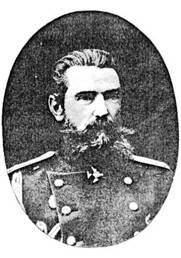
12. The commander of the 17 Army Corps, General of Infantry, P. P. Yakovlev.
The commander in chief of the September 30 directive pointed out that: "... the 4 Army is entrusted with occupying the Vistula between Wilga and Veprz and striking the enemy operating in the Ivangorod region, Kozienice, now developing aggressively actions to expand the bridgehead on the left bank. .. "
And A.E. Evert pointed out the 17 lump for the corps of the latter to build bridges at Matsejevitse and Pavlovice.
The position of the units fighting on the left bank was difficult: it was aggravated by swampy soil, water, sometimes reaching above the knees, the terrible condition of the roads. Pavlovitsky bridge was not only loosened by continuous crossings, but also from time to time it received damage from the fire of German artillery. When the 3 of October bridge was finally disabled, rafts were sent from Ivangorod. While the latter were walking, the message from the rear was maintained with the help of 3-x steamers.
A second bridge began to be built, and in the meantime, on October 5, the first bridge was repaired - and the ferry resumed under German heavy artillery fire.
13. Crossing at Ivangorod through the Vistula. Annals of the 1914 War of the Year No. 14. From the author's library.
Both corps were shipped in two points - at Pavlovice and at Ivangorod. In the first case, the military operations were led by Komkor-17, and from Ivangorod, by the Commander of 3-Caucasian.
The Germans initially introduced into the battle the reinforced brigade of the 20 corps, while the remaining parts of the latter formed the right flank of the group A. von Mackensen, advancing through the r. Pilica to Warsaw.
October 2 Guards Reserve Corps, advancing on Ivangorod, tried to cross to the right bank of the Vistula north of Ivangorod - but the attempt failed, and the Germans pulled the 11 corps brigade to strengthen.
Thus, the historic Kozenitsky bridgehead stretched along the front 15 km, and in depth (up to the Vistula River) - no more than 4 km. And in this space 5 of the Russian divisions were introduced, during 12-days, in difficult conditions, they stubbornly fought against 4 by the German divisions.
14. On the Vistula. Night attack of the German infantry. Chronicle of the war 1914 of the year. No. 22. From the author's library.
By September 23, the bridge position against Novo-Alexandria at Klykava was occupied by the 2 th brigade of the 1 th grenadier division, supported by 3 batteries. The trenches were dug to the height of a man, there were dugouts, traverses, a line of posts, notches, dozens of land mines were laid, and hand grenades were loaded.
In pursuance of the order of the commander of the commander of the Grenadier September 26 sent two avant-garde to the left bank (one from each division). The distance between avant-gardes - 9 km. The command of the troops on the left bank was concentrated in the hands of the chief of the 1 grenadier division, and the command on the right bank was assigned to the commander of the 2 grenadier division.
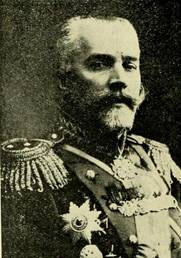
15. The Chief of the 1 Grenadier Division, Lieutenant-General A. I. Postovsky.
On the 27 of September, the Grenadier Corps was assigned the task of, first, “taking a position on the left bank” of Lagushov and Sarnov (referring to the offensive of the enemy’s division from Gorbatka to Ivangorod); and, secondly, to have a reserve behind the right flank and “their offensive” to assist the Caucasians.
The elements of the task contradicted each other; moreover, from the right flank of the position indicated by the grenadiers (Sarnov) to the left flank of the advancing 3 Caucasian Corps (at Slovik Novo) there were at least 8 km.
On the morning of September 27, I. I. Mrozovsky requested artillery support for the fortress in the Gnevashov area, which was firmly occupied by the enemy. He complained about the broad front of the hull (about 10 km) and about the lack of an ulnar connection with its neighbors.
At this time, the 16 Corps began to cross at Kazimierz - the advance guard moved forward (infantry regiment, battery and 3 Cossack hundreds; transferred on the ship ferry). The avant-garde was ordered to take a position on the left bank on the Lavetsko line, Barychka (about 10 km from the crossing).
The 8 and 9 pontoon battalions began to bridge the bridge.
September 27 began the crossing of the 41 and 47 divisions.
It soon became clear that between the Grenadier and 16 corps there was formed an 5 - 6-km gap, which is very beneficial for maneuvering the enemy. The latter did not fail to take advantage of this. The Germans attacked the left flank of the grenadier and threatened the rear of slowly moving forward parts of the 16 corps.
In 22 hours A.E. Evert gave the order to withdraw the corps beyond the Vistula - “due to the impossibility of joint actions of the XVI and the grenadier corps”.
The departure of the Grenadier Corps to Novo-Alexandria was covered by a brigade that occupied the bridgehead. German artillery damaged the bridge and sank the fire ship. Germanic infantry pursued retreating. The situation inside the bridgehead was created critical. It was saved by a successful explosion of 22-stone mines, laid before the fortification. After that, the Germans stopped the offensive.
By one o'clock in the morning 29 September the bridge was repaired, and in the 4 hours of the 30 minute, parts of the corps (except for the brigade defending the bridgehead) were on the right bank. By 8 watch the whole case was on the right bank.
Grenadiers missed 17 guns (two batteries died entirely).
16-th corps went to the right bank safely. These days, the 41 Infantry Division lost 6 officers and 238 soldiers, the 47 Infantry Division — 3 officers and 90 soldiers, 8 and 9 pontoon battalions — 1 officers and 2 soldiers.
With the best cooperation of neighbors, the grenadiers could keep the bridge position at Novo-Alexandria, and then, relying on the right flank on the fortress, and on the left, on the bridgehead conquered by the 16 corps, to go on the offensive again. The bend of the Vistula between Golomb and Kazimierz represented a much better position than the Cozenica bridgehead.
The 4 Army Corps fought with the 20 Army Corps Brigade, Guards Reserve Corps and the division of the Voirsh Corps that approached the Vistula. At this time, the Germans were fulfilling a new decision by P. Hindenburg: defending on the Vistula against Ivangorod and to the south, strike the left flank of the Warsaw group of the Russian 2 Army, trying to cut it off from Warsaw and surround it.
Despite the failure, A.E. Evert, having assessed the current situation, came to the conclusion that she demanded active actions from his army in order not to allow the Germans, leaving the barriers against the 4 army, to move all forces to the north. The situation they estimated correctly: the Germans launched an offensive on Warsaw. And the commander-4 made a decision - the whole section of the Vistula near Novo-Alexandria and to the south to defend the 16 corps, while the Grenadiers concentrate south-east of Ivangorod - for active operations. The general forces of the opposing enemy on the front of the 4 Army are a little more than two corps.
The 4 Army was strong enough. Combat strength of the operational units (based on 17-Corps brigades 75-rd and 81-th infantry divisions and Ivangorod garrison) - about 160 thousand bayonets, 317 guns, 483 light gun, 60 field howitzers, 88 heavy guns, 4 airplane. .
The 16 Corps was ordered to secretly change the grenadier, and the latter to concentrate in a semi-transition to the south-east of Ivangorod. But the shift was delayed - it was delayed by bad roads and the rugged terrain of the Kazimierz-Novo-Alexandria district.
To be continued
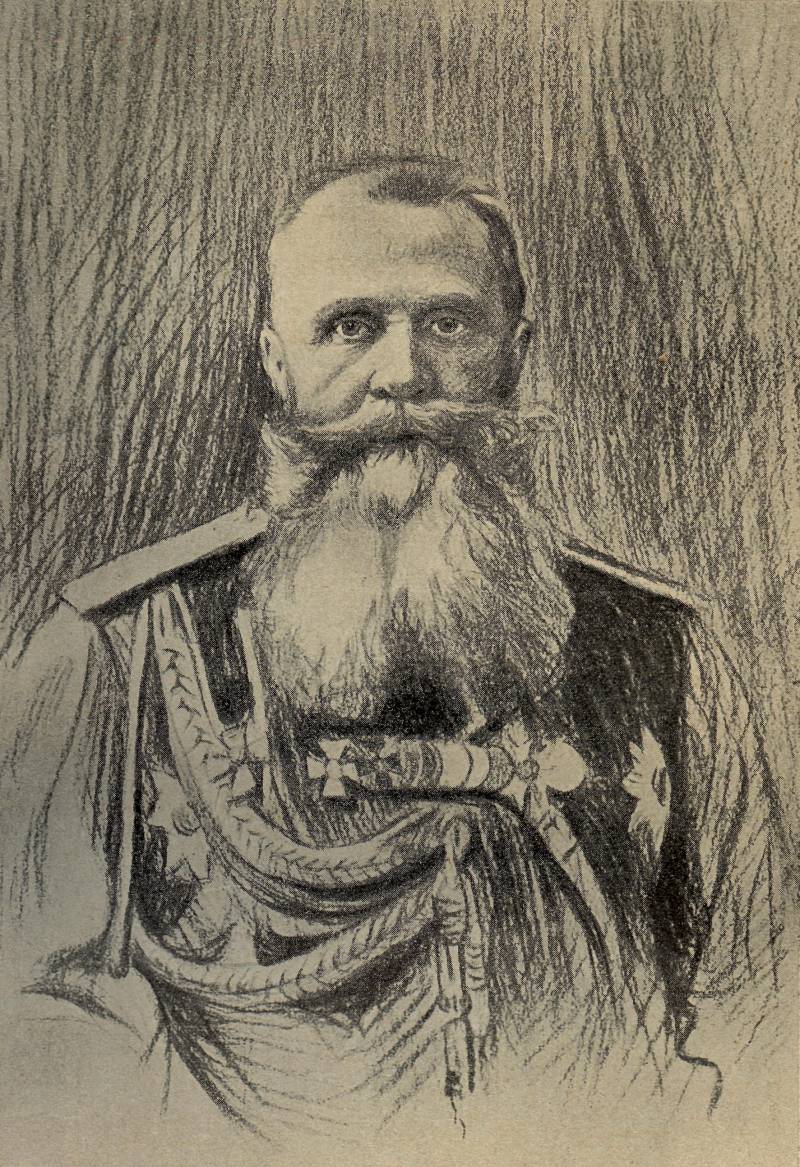
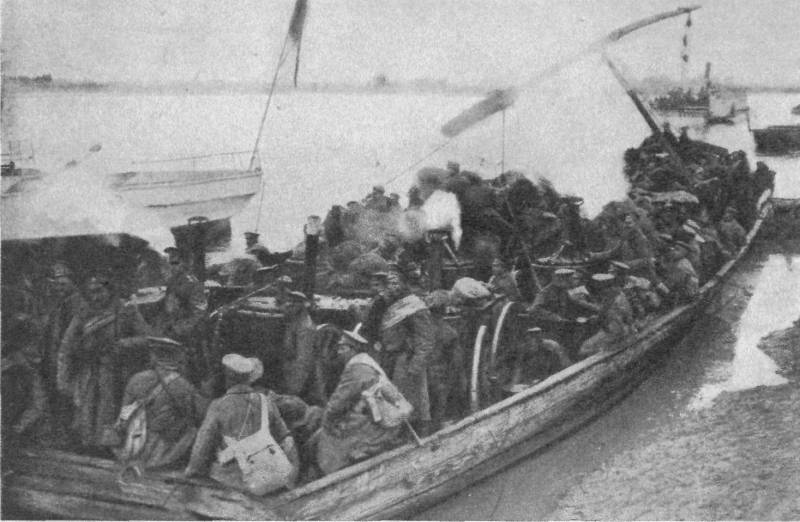
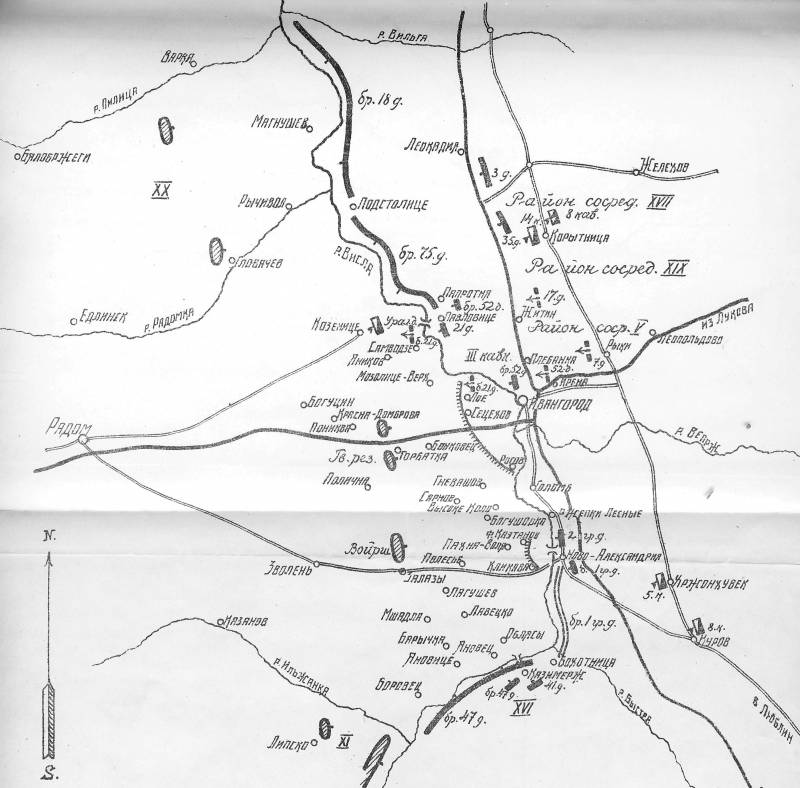
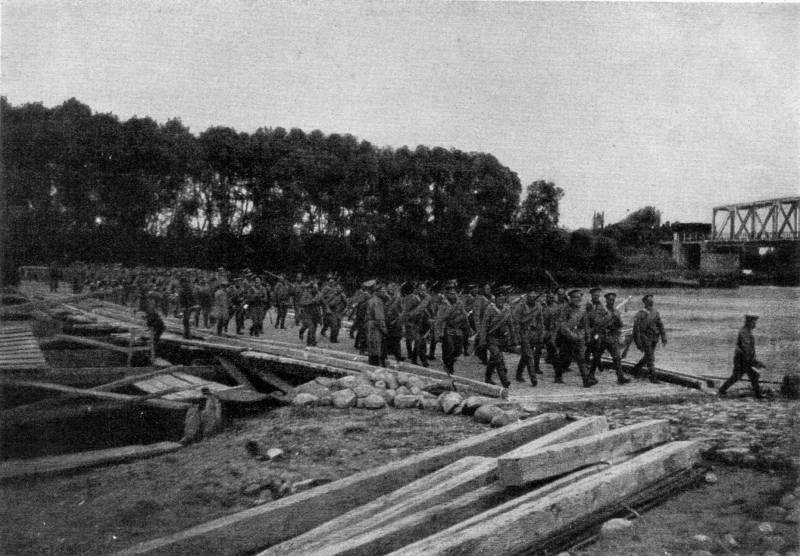
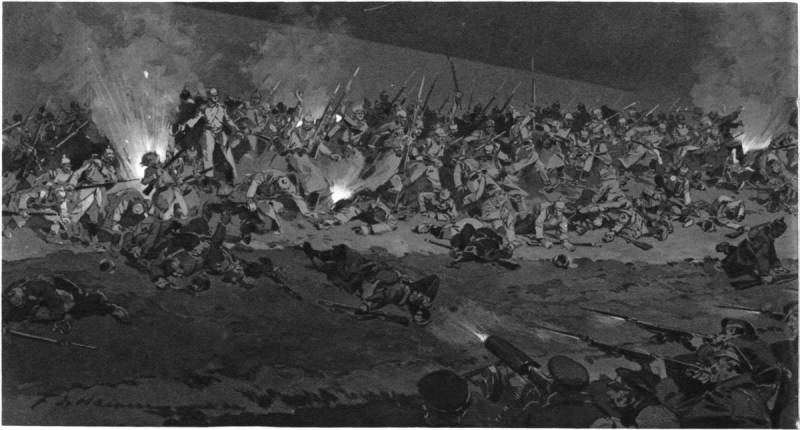
Information